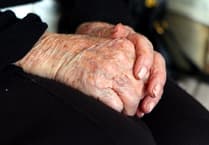The Museum of Dartmoor Life in Okehampton officially opened for the 2023 season on Monday (March 27) with a new set of exhibitions and events planned.
This year the museum is hosting the Lydford Coins, originally minted in Lydford in the 900s and used to pay off the Vikings who took them back to Scandinavia.
The museum has also put on its ‘Dyeing on Dartmoor’ exhibition which explores the history of cloth dyeing on Dartmoor and the process of traditional cloth-making. Funded by the Royal Society, the exhibition includes cloth dyed by the curators themselves using traditional methods, used by Bronze Age people, from flora and fauna found on Dartmoor such as nettles, heather, oak and hawthorn.
The museum has also arranged for expert craftspeople to come in and demonstrate the dyeing techniques and will offer children the chance for children to get involved in activities such as carding and weaving. The exhibition will run throughout the year.
The museum will also be the home of the Destination Dartmoor art exhibition, made in collaboration with Cornwall-based creative arts organisation Mayes Creative, which celebrates the Dartmoor Line heritage. There will be a chance to meet the artists who have contributed to the exhibition on April 17.
Manager of the Museum of Dartmoor Life Kristy Turner, said: ‘We are very excited about opening this year. We have a lot of new amazing exhibitions for our visitors to see with craftspeople coming in and showing their skills. I would like to say a huge thank you to our volunteers without who we would not be opening.
‘We know how difficult it is for the general public but we hope they will come here for fun and information and learn more about Dartmoor history.’
The museum began life as a charitable trust, founded in 1978, in order to set up a museum for Okehampton and the north Dartmoor region and was first opened to the public in 1981.
It has not moved premises since its opening but the building has been updated several times since then. Building work was carried out in the 1980s and early 1990s but major work took place in the 2000s when the museum was closed for 12 months in 2005 while the building was renovated and modernised.




